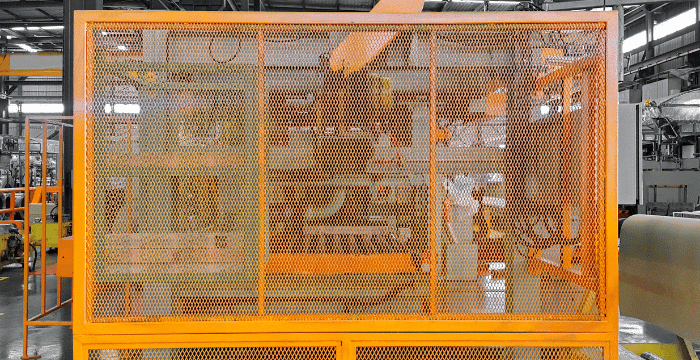Workplace hazards are a common concern for many industries, ranging from construction and manufacturing to healthcare and hospitality. Such hazards can lead to serious injuries, illnesses, and even fatalities, which can have a devastating impact on both workers and their families. However, with the help of engineering control, these risks can be significantly reduced or eliminated altogether.
Engineering control involves the use of technology, equipment, and processes to modify the work environment or task itself. This process minimizes or even eliminates hazards, making work safer for everyone involved.

Table of Content:
Table of Content
What is Engineering Control?
Engineering control is a type of hazard control that is used to minimize or eliminate risks in the workplace. They can include a wide range of interventions, such as ventilation systems, soundproofing, machine guards, ergonomic workstations, and automated equipment. The goal of engineering control is to create a safe and healthy work environment by reducing hazards.
Engineering Approach to Engineering Control
Technical approach
This method covers the use of technology and advanced engineering methods to reduce or eliminate workplace hazards. It focuses on creating engineering solutions that are highly effective, efficient, and reliable. Some examples of technical engineering controls include automated machinery and robotics, safety sensors, and alarms.
Substitution
Substitution is an approach of engineering control that involves replacing a hazardous substance with a less hazardous alternative. For example, a company may substitute a toxic chemical used in manufacturing with a less toxic alternative. This approach is often the most effective method for eliminating hazards, but it can be costly and may require significant changes to the production process.
Quarantine
Quarantine involves isolating hazardous materials or processes to prevent exposure to workers. It can be done by placing a barrier between the worker and the hazard or enclosing the hazardous process in a separate room. This approach is commonly used in healthcare settings to prevent the spread of infectious diseases, but it can be applied to other industries as well.
Distance control
The last approach of engineering control involves creating physical barriers between workers and hazardous materials or processes. This approach is often used in conjunction with other engineering control methods to further reduce the risk of exposure. Workers can control remote-controlled equipment from a safe distance to perform tasks in hazardous areas. For example, companies use a remote-controlled camera to inspect the inside of a pipeline for leaks or damage.
Engineering Control Practice Example
Here are some examples of engineering control practices:
Reduce process temperature
Lowering the temperature aims to reduce the risk of heat-related hazards, such as fires, explosions, and burns. For example, in a chemical plant, reducing the process temperature of a reaction can prevent the production of hazardous by-products or reduce the risk of runaway reactions. Companies can do this method through by using heat exchangers, cooling jackets, or other cooling systems.
Cover the engines
Covering engines is a common practice in many industrial settings to prevent the release of harmful emissions and protect workers from exposure to hazardous substances. For example, in a welding shop, covering the engines of the welding machines can prevent the release of fumes and particulates into the air, protecting workers from respiratory hazards.
Put up a safety fence
A safety fence is a physical barrier that prevents unauthorized access to hazardous areas. In a construction site, putting up a safety fence around excavations prevents workers and pedestrians from accidentally falling into the excavation and suffering serious injuries.
Use a lifting equipment
Lifting equipment safely moves heavy loads without causing injury to workers. In a manufacturing plant, using a crane to lift heavy equipment or materials can prevent back injuries and other musculoskeletal disorders.
Engineering software
Engineering software is computer software for engineering applications, such as design, analysis, and simulation. In the automotive industry, using computer-aided design (CAD) software can help engineers design parts and assemblies more efficiently. Meanwhile, simulation software can help identify potential design flaws before building prototypes.
Conclusion
Engineering control is a crucial aspect of workplace safety, and it is essential to take necessary measures to avoid work hazards. By implementing engineering controls, employers can effectively mitigate potential risks and improve the safety and health of their employees. However, this process can be complex and requires careful planning and execution.

Fortunately, technological advancements have made it easier to manage engineering controls through software solutions like HashMicro’s Engineering ERP System. This innovative tool offers a comprehensive range of features that streamline the engineering control process. Achieve a higher level of safety by utilizing it and get up to 50% off on Productivity Solutions Grant! or try the free demo today!




































